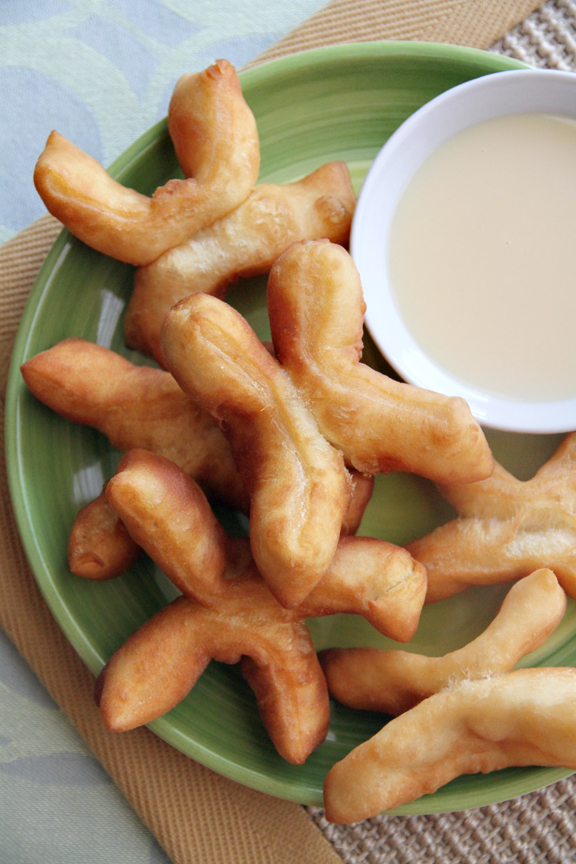I chuckled when reading up on the history of these Chinese crullers, you tiao (油条), which have been localized in Thailand into Pa Thong Ko (ปาท่องโก๋).
According to the widely-circulated Chinese folk etymology, these pairs of dough sticks apparently represent two evil people who deserve to suffer in hot oil. To the Thai people, the conjoined crullers represent something cuter and more romantic: a couple who are deeply attached to one another and seen together all the time. Symbols and figures of speech behave like that across the various cultures. The Zealous Water Buffalo, my alter ego, has written about these things.
Another funny thing about Pa Thong Ko: it is a misnomer resulted from confusion on the Thai’s part over the various goodies sold by Chinese immigrants from years ago; it’s not even a localized pronunciation of the original Chinese, but a wrong name altogether. We could have gone with something close to you char kway (油炸粿) or something similar to that as the Chinese words that have entered our vernacular often come from the Hokkien or Teochew dialects. But, apparently, a mistake was made a while back and it has stuck with us ever since. In other words, unless you speak to someone who knows Chinese, your inquiry about youtiao or you char kway in Thailand will be met with a,”Huh?” Continue Reading →











